BRANCH: Britain, Representation, and Nineteenth-Century History
This site provides users with a free, expansive, searchable, reliable, peer-reviewed, copy-edited, easy-to-use overview of the period 1775-1925. Unlike dry chronologies that simply list dates with minimal information about the many noteworthy events of a given year, BRANCH offers a compilation of a myriad of short and long articles on not only high politics and military history but also “low” or quotidian histories (architecture design, commercial history, marginal figures of note, and so on). Since no one scholar could hope to provide a complete overview of an entire century of British society, I have compiled material from a host of scholars working on all facets of the British nineteenth century. Authors come from History, Art History, and English departments across the world. The site differs from wikipedia in so far as all articles have undergone peer review, copy-editing, and proofing. Each article also seeks to interpret the events being discussed. Indeed, many events are discussed by more than one scholar.
Thanks to its site structure, BRANCH offers users an innovative approach to history itself, suggesting that any given bit of historical information can branch outward in often surprising directions. Rather than provide a linear timeline of history from the perspective of the victors, I wish to provide a history that comes closer to what Walter Benjamin famously termed jetztzeit or “the time of the now,” an impacted history that explores the messy uncertainties and possibilities of any given historical moment. BRANCH’s logo is derived from an illustration by Aubrey Beardsley (1872-98) because that image (see top right) puts me in mind of Benjamin’s description of history:
A Klee painting named ‘Angelus Novus’ shows an angel looking as though he is about to move away from something he is fixedly contemplating. His eyes are staring, his mouth is open, his wings are spread. This is how one pictures the angel of history. His face is turned toward the past. Where we perceive a chain of events, he sees one single catastrophe which keeps piling wreckage and hurls it in front of his feet. The angel would like to stay, awaken the dead, and make whole what has been smashed. But a storm is blowing in from Paradise; it has got caught in his wings with such a violence that the angel can no longer close them. The storm irresistibly propels him into the future to which his back is turned, while the pile of debris before him grows skyward. This storm is what we call progress.
Chronologies normally give a sense that there was only one way for events to play out. By going into more interpretative depth about events, by inviting multiple perspectives on the same events, and by opening our scope to all aspects of the nineteenth century, BRANCH’s scholars resemble Benjamin’s angels, propelled towards the future while in rapt contemplation of our collective past.
If you are trying to find information on a specific topic, I suggest that you visit the Topic Clusters tab or use the Search box. If you prefer to browse, click on the Timeline at the top of this browser window. The Carousel below highlights the newest articles in BRANCH. For more information about how best to use BRANCH, click on the ‘How to Use’ folder above. For an article that discusses BRANCH, click on the About link above. Throughout, you will find links to geospatial information for locations mentioned in the article, with the first instance in each article marked by ![]() the geolocation image you will see here to the right. Clicking on that takes you to COVE: Collaborative Organization for Virtual Education, with which BRANCH is interlinked.
the geolocation image you will see here to the right. Clicking on that takes you to COVE: Collaborative Organization for Virtual Education, with which BRANCH is interlinked.
Dino Franco Felluga,
General Editor

 Sarah Schaefer Walton, “Murray’s Handbook for Travellers: Being a Guide to John Murray III’s Innovative Travel Series”
Sarah Schaefer Walton, “Murray’s Handbook for Travellers: Being a Guide to John Murray III’s Innovative Travel Series” Martin Meisel, “Darkness: Joseph Conrad and Harriet Beecher Stowe”
Martin Meisel, “Darkness: Joseph Conrad and Harriet Beecher Stowe” Joseph Viscomi, “William Blake’s 1818 Letter to Dawson Turner and Later Career as Graphic Artist”
Joseph Viscomi, “William Blake’s 1818 Letter to Dawson Turner and Later Career as Graphic Artist” Owen Holland, “‘These Christs that die upon the barricades’: Victorian Responses to the Paris Commune”
Owen Holland, “‘These Christs that die upon the barricades’: Victorian Responses to the Paris Commune”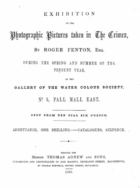 Peter H. Hoffenberg, “The Official Opening of ‘The Exhibition of the Photographic Pictures taken in The Crimea by Roger Fenton, Esq.'”
Peter H. Hoffenberg, “The Official Opening of ‘The Exhibition of the Photographic Pictures taken in The Crimea by Roger Fenton, Esq.'” Rebecca Nesvet, “Miss Whitehead, ‘The Bank Nun’”
Rebecca Nesvet, “Miss Whitehead, ‘The Bank Nun’”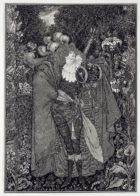 Sasha Dovzhyk, “The Queer Little Grove: The Adoption of Aubrey Beardsley by Mikhail Kuzmin”
Sasha Dovzhyk, “The Queer Little Grove: The Adoption of Aubrey Beardsley by Mikhail Kuzmin” Irena Yamboliev, “Christopher Dresser, Physiological Ornamentist”
Irena Yamboliev, “Christopher Dresser, Physiological Ornamentist” Jules Law, “The Victorian Stereoscope”
Jules Law, “The Victorian Stereoscope”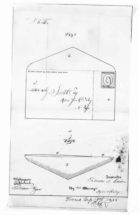 Jason Camlot, “The First Phonogramic Poem: Conceptions of Genre and Media Format, Circa 1888”
Jason Camlot, “The First Phonogramic Poem: Conceptions of Genre and Media Format, Circa 1888” Jean Little, “Algebraic Logic in Through the Looking Glass”
Jean Little, “Algebraic Logic in Through the Looking Glass” Jules Law, “Victorian Virtual Reality”
Jules Law, “Victorian Virtual Reality” Troy J. Bassett, “‘More than a Bookseller’: Iredale’s Library as the Center of Provincial Literary Life”
Troy J. Bassett, “‘More than a Bookseller’: Iredale’s Library as the Center of Provincial Literary Life” James Najarian, “Alexander Burnes’s Travels into Bokhara (1834)”
James Najarian, “Alexander Burnes’s Travels into Bokhara (1834)” Joanne Wilkes, “The Implications of the Cricket Match in Anthony Trollope’s The Fixed Period (1882)”
Joanne Wilkes, “The Implications of the Cricket Match in Anthony Trollope’s The Fixed Period (1882)”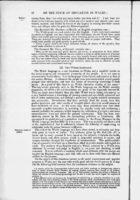 Matthew Jones, “On Nineteenth-Century Welsh Literacies, and the ‘Blue Book’ Education Reports of 1847”
Matthew Jones, “On Nineteenth-Century Welsh Literacies, and the ‘Blue Book’ Education Reports of 1847”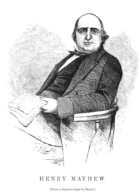 Janice Schroeder, “The Publishing History of Henry Mayhew’s London Labour and the London Poor”
Janice Schroeder, “The Publishing History of Henry Mayhew’s London Labour and the London Poor”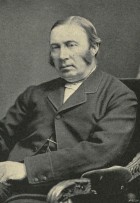 Kimberly J. Stern, “The Publication of John Pentland Mahaffy’s The Decay of Modern Preaching (1882)”
Kimberly J. Stern, “The Publication of John Pentland Mahaffy’s The Decay of Modern Preaching (1882)” Scott C. Thompson, “On G. H. Lewes’s Problems of Life and Mind, 1874—79″
Scott C. Thompson, “On G. H. Lewes’s Problems of Life and Mind, 1874—79″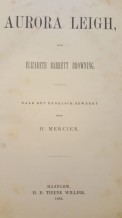 Karen Dieleman, “Aurora Leigh in the Netherlands, 1870-1900″
Karen Dieleman, “Aurora Leigh in the Netherlands, 1870-1900″